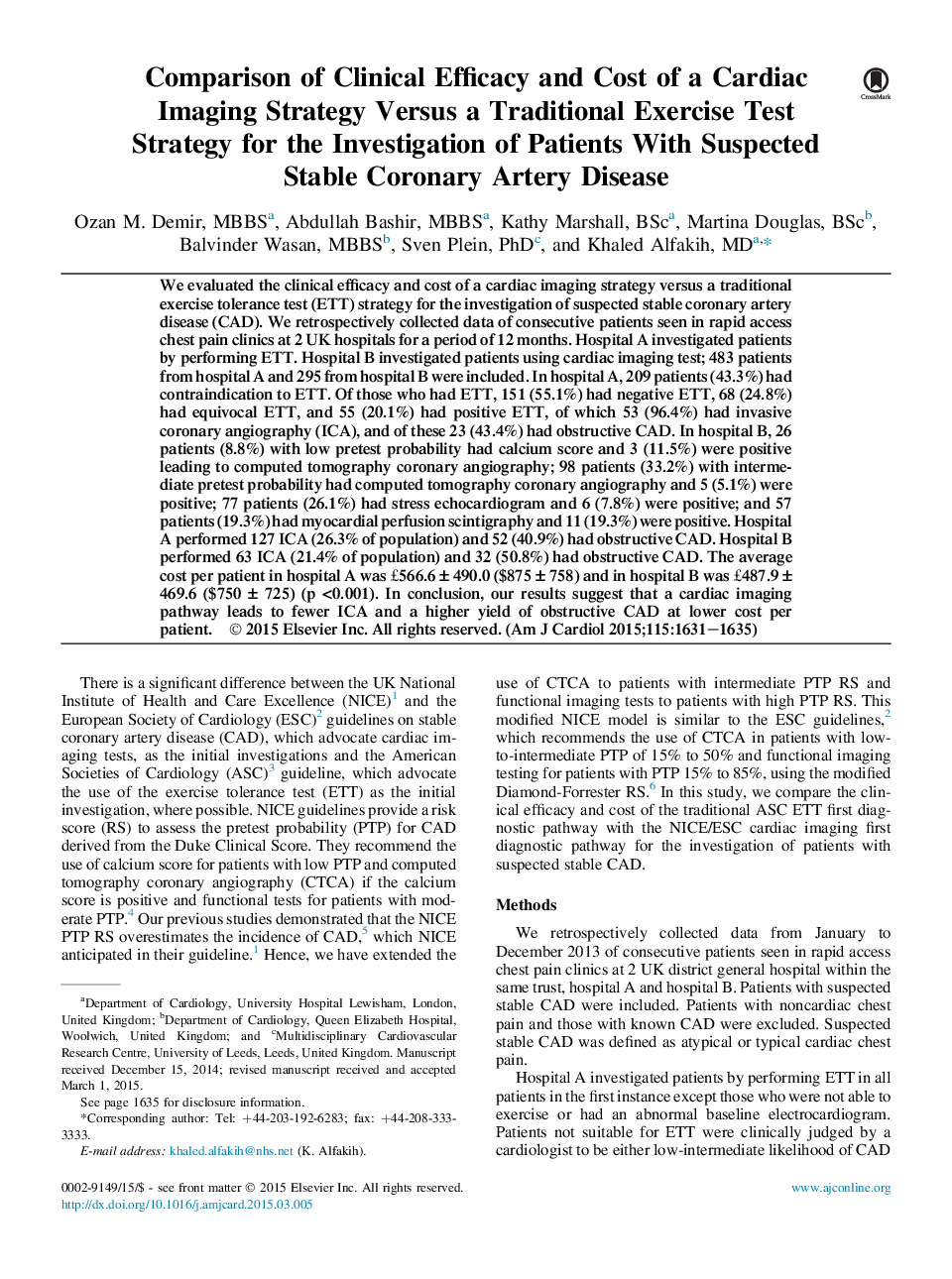| Article ID | Journal | Published Year | Pages | File Type |
|---|---|---|---|---|
| 5930251 | The American Journal of Cardiology | 2015 | 5 Pages |
We evaluated the clinical efficacy and cost of a cardiac imaging strategy versus a traditional exercise tolerance test (ETT) strategy for the investigation of suspected stable coronary artery disease (CAD). We retrospectively collected data of consecutive patients seen in rapid access chest pain clinics at 2 UK hospitals for a period of 12 months. Hospital A investigated patients by performing ETT. Hospital B investigated patients using cardiac imaging test; 483 patients from hospital A and 295 from hospital B were included. In hospital A, 209 patients (43.3%) had contraindication to ETT. Of those who had ETT, 151 (55.1%) had negative ETT, 68 (24.8%) had equivocal ETT, and 55 (20.1%) had positive ETT, of which 53 (96.4%) had invasive coronary angiography (ICA), and of these 23 (43.4%) had obstructive CAD. In hospital B, 26 patients (8.8%) with low pretest probability had calcium score and 3 (11.5%) were positive leading to computed tomography coronary angiography; 98 patients (33.2%) with intermediate pretest probability had computed tomography coronary angiography and 5 (5.1%) were positive; 77 patients (26.1%) had stress echocardiogram and 6 (7.8%) were positive; and 57 patients (19.3%) had myocardial perfusion scintigraphy and 11 (19.3%) were positive. Hospital A performed 127 ICA (26.3% of population) and 52 (40.9%) had obstructive CAD. Hospital B performed 63 ICA (21.4% of population) and 32 (50.8%) had obstructive CAD. The average cost per patient in hospital A was £566.6 ± 490.0 ($875 ± 758) and in hospital B was £487.9 ± 469.6 ($750 ± 725) (p <0.001). In conclusion, our results suggest that a cardiac imaging pathway leads to fewer ICA and a higher yield of obstructive CAD at lower cost per patient.
